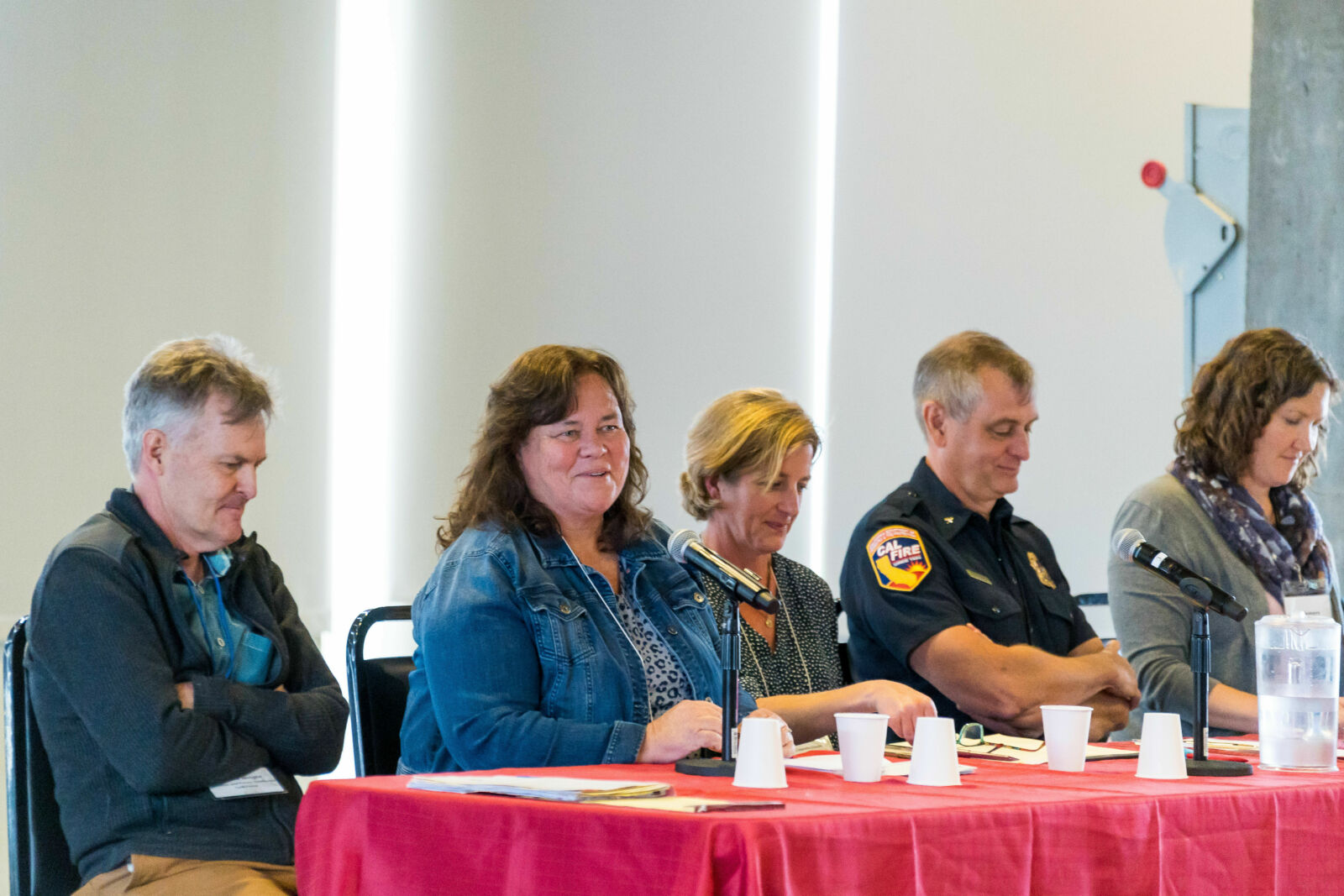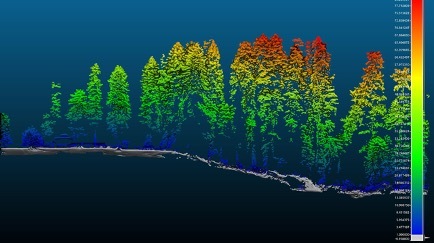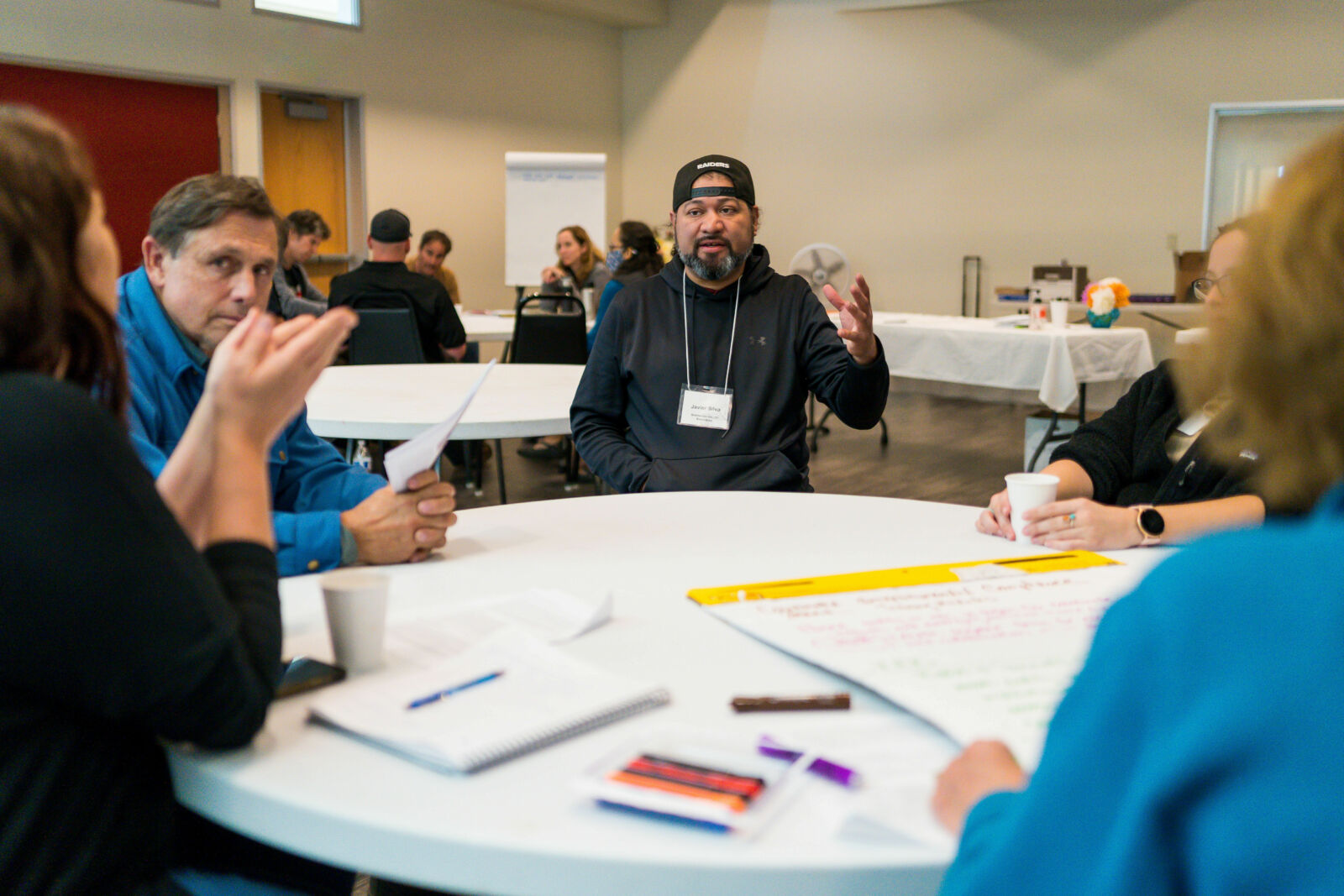Wildfires don’t stop at property lines. Scientists and land managers have been pushing that point for decades, advocating for cross-boundary approaches to our shared challenges. But changing deeply rooted institutions is no easy task. Numerous strategies are emerging to change the way we address fire risk. The US Forest Service has created an initiative called “Shared Stewardship” in an effort to create an institutional culture of partnerships, collaboration, and working across boundaries. But what does all this look like on the ground?
This summer, as a National Forest Foundation fellow, I got an inside look at this effort. I worked with Tim Bailey of the Watershed Research and Training Center (WRTC) who acts as the Shared Stewardship advisor for the North Coast region of California, and director of the California Forest Lidar Analytics Collaborative. As a graduate student, I saw many dynamics I read about in papers playing out on the ground. I’ll return to the University of Oregon this fall with a richer understanding of these issues to inform my work. Here are three themes that stood out to me from the summer:
Since the 1990s, we have been moving away from top-down approaches to forest management and toward local collaboration to guide decisions. Now, pushes for cross-boundary partnerships are resulting in more national and statewide programs, providing critical project funding. How do we make sure this doesn’t swing us back to top-down decisions about how that funding is spent? The North Coast Resource Partnership is addressing this question head-on, recognizing that local communities know their landscapes best. NCRP, a close partner of WRTC, is a regional group of Tribes, counties, and partners across California’s North Coast. NCRP and WRTC are both in a sort of “sweet spot” - with their finger on the pulse of local community needs across the region, and the clout to bring those needs to the ears of agency officials and policymakers.

North Coast Resource Partnership.
Agency representatives speak to partners and community members at the North Coast Resource Partnership Annual Prioritization Meeting.

Tim Bailey / California Forest Lidar Analytics Collaborative.
An image of tree canopy heights, generated with lidar data. Lidar uses light waves to measure the height above ground at a series of points, taking into account elevation at that location. Canopy height datasets provide information about individual trees and the forest at large, helping guide management decisions.
With the massive amount of work ahead of us to adapt our forests and communities to fires and climate change, data and technology have critical roles to play. Lidar is three-dimensional imaging data collected by aircraft that creates a high-resolution picture of forest characteristics like tree height and density. Such data can greatly cut down on the time needed for field surveys, and help land managers prioritize sites for management. But data and technology on their own cannot solve our issues - and nothing can substitute for on-the-ground, local knowledge. We need to empower communities to be leaders in applying data to meet their needs, breaking down the barriers that have historically kept technical solutions behind walls. WRTC is working to do just that, providing training opportunities and working to democratize forest data. This summer, I interviewed partners to produce “lidar user stories” that document how lidar data is supporting local work on watershed restoration, fish habitat enhancement, and fire risk reduction. These stories show how access to lidar data can empower local innovation in working toward forest health.
The State of California is now pouring funding toward forest and fire resilience work like never before. Hundreds of initiatives have sprung up to build partnerships and increase the “pace and scale” of management. Social scientists have documented how moments of crisis and urgency can often lead those in power to skip over equitable processes. In contrast, many community-based organizations have taken up the slogan that “change happens at the speed of trust.” Meeting today’s moment means developing clear and deliberate governance, taking the time to build and maintain trusting relationships, while also identifying areas where work can be streamlined to pick up the pace. We are quickly losing forests to high-severity wildfire - there has never been a more urgent time to do the slow work of relationship-building.

North Coast Resource Partnership
Partners discuss local and regional needs at the North Coast Resource Partnership Annual Prioritization Meeting.
Cover photo courtesy of the North Coast Resource Partnership.

